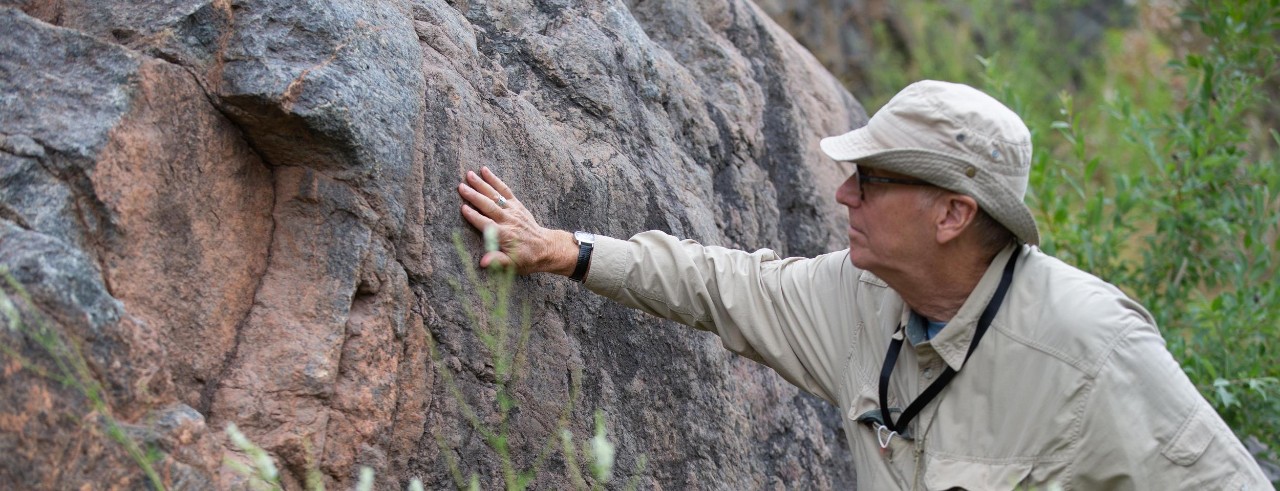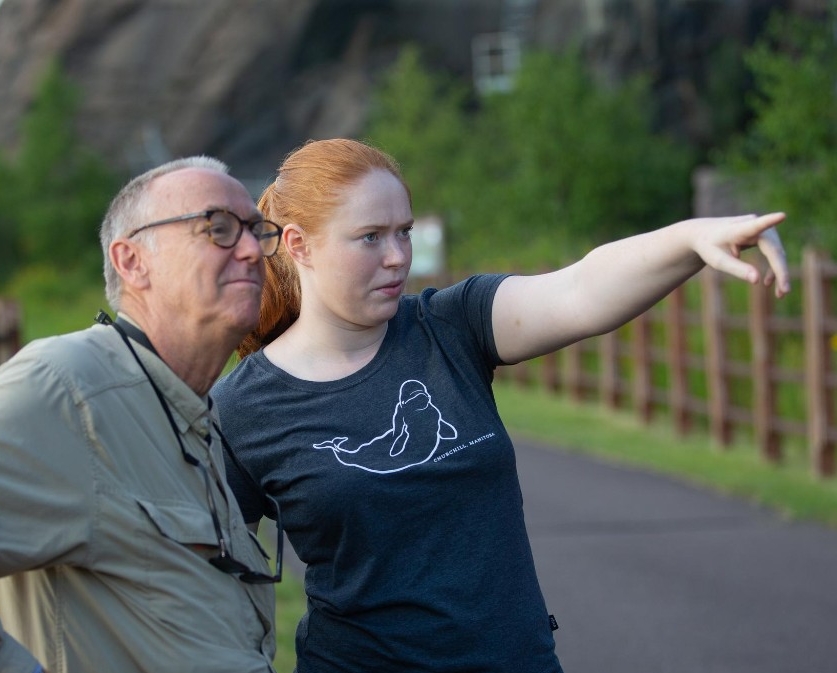
WLW: UC geologist explains local risks from earthquakes
More than 19,000 killed in deadly Turkey earthquake
WLW turned to a University of Cincinnati geologist to explain the earthquake risks in the Midwest after a natural disaster in Turkey and Syria killed more than 19,000 people.
A magnitude 7.8 earthquake on Monday destroyed hundreds of thousands of structures in Turkey and Syria in what the Turkish president described as “the disaster of the century.”

UC associate professor Craig Dietsch leads a geology field trip to Thunder Bay, Ontario. Photo/Andrew Higley/UC Marketing + Brand
UC associate professor Craig Dietsch, head of UC's Department of Geosciences, told 700-WLW's Eddie & Rocky Show that earthquakes occur along known fault lines with no warning.
“Predicting earthquakes is very tricky,” Dietsch told co-hosts Rocky Boiman and Eddie Fingers.
“The fault lines in Turkey are very similar to the San Andreas,” Dietsch said. “They occur where these giant pieces of the Earth's crust are moving around and grinding past one another.”
Dietsch said the largest earthquake recorded in the United States was an 9.2 in southern Alaska in 1964, which generated a tsunami that killed people as far away as California.
“Any earthquake above 7 is a gigantic earthquake,” Dietsch said.
Dietsch leads regular geosciences field trips so students can explore the unique geology of places such as Thunder Bay, Ontario. Read: School of Rocks.
Dietsch said some new buildings in earthquake-prone areas have shock absorbers to help mitigate damage from tremors.
“Everywhere on our planet is under constant stress. If rocks are weak, they tend to slide past each other and you don't get an earthquake,” Dietsch said. “But if two strong rocks are strong, pressure builds up and sooner or later that stress will be released through an earthquake.”
Dietsch said the closest fault to Cincinnati is the Reelfoot Rift in Missouri.
“We live in a pretty seismically safe zone,” Dietsch said.
Listen to the WLW interview on the Eddie and Rocky Show.
Featured image at top: UC associate professor Craig Dietsch examines a cliff face near Duluth, Minnesota, during a 2022 field trip. Photo/Andrew Higley/UC Marketing + Brand
Related Stories
Mural by UC grad honors U.S. military history
July 17, 2024
Local 12 highlighted a new mural by University of Cincinnati graduate and artist Brandon Hawkins that pays tribute to U.S. military history.
Social media fuels extreme political rhetoric
July 17, 2024
UC College of Arts and Sciences Professor Jeffrey Blevins tells Local 12 that online algorithms fuel political polarization on social media.
NIS program opens new horizons for international student
July 17, 2024
In his pursuit of physics and a taste for research, Akash Khanikor ventured from his hometown in India's Assam to the University of Cincinnati, drawn by the promise of hands-on exploration early in his undergraduate career as a NEXT Innovation Scholar.
Camp aims to empower children, teens who stutter
July 17, 2024
A one-week, evidence-based program for children and teens who stutter at the University of Cincinnati will teach kids to communicate effectively, advocate for themselves and develop confidence about their communication abilities. Camp Dream. Speak. Live., which is coming to Cincinnati for the first time July 22-26, began in 2014 at the University of Texas at Austin. The Arthur M. Blank Center for Stuttering Education and Research at UT expects to serve more than 2,000 children at camps across the United States, Africa, Asia and Europe this year.
UC archivist explores Troy’s invisible workers
July 17, 2024
UC Classics archivist Jeff Kramer examined the unheralded and largely uncredited role laborers played in the 1930s excavation at Troy in Turkey.
From intern to full-time: Recent Lighting Design grad joins Bandit Lites
July 16, 2024
Lighting & Sound America spotlights recent graduate Riley Rowan's new position at Bandit Lites, a full-service design, management and producer of live events and entertainment.
CCM alum Donald Lawrence to be inducted into Cincinnati Black Music Walk of Fame
July 16, 2024
UC College-Conservatory of Music alumnus Donald Lawrence is part of the 2024 class of Cincinnati Black Music Walk of Fame inductees. Located at the Banks in downtown Cincinnati, the induction ceremony on July 27 will feature a parade of stars and a free concert by the Zapp Band.
U.S. stroke survival is improving, but race still plays role
July 16, 2024
U.S. News & World Report, HealthDay and Real Health covered new research from the University of Cincinnati that found overall rates of long-term survival following stroke are improving, but Black individuals experience worse long-term outcomes compared to white individuals.
Presidential challenge to UC: Join Ride Cincinnati to fight cancer
July 16, 2024
UC President Neville Pinto has again challenged every UC college and unit to send at least one rider to the September 14 Ride Cincinnati event to help fundraise for cancer research and cancer care. UC students ride free. Signup by July 31 for free UC-branded cycling jersey.
Pediatric ICU rates linked to housing quality, income, education
July 16, 2024
Healio highlighted research led by the University of Cincinnati and Cincinnati Children's Hospital's Carlie Myers that found a link between pediatric ICU admission rates and housing quality, household income and education.
